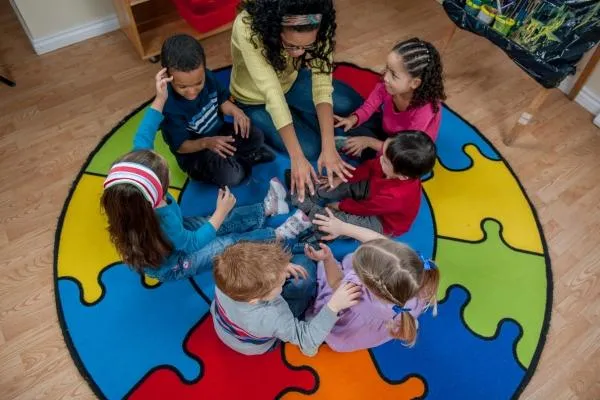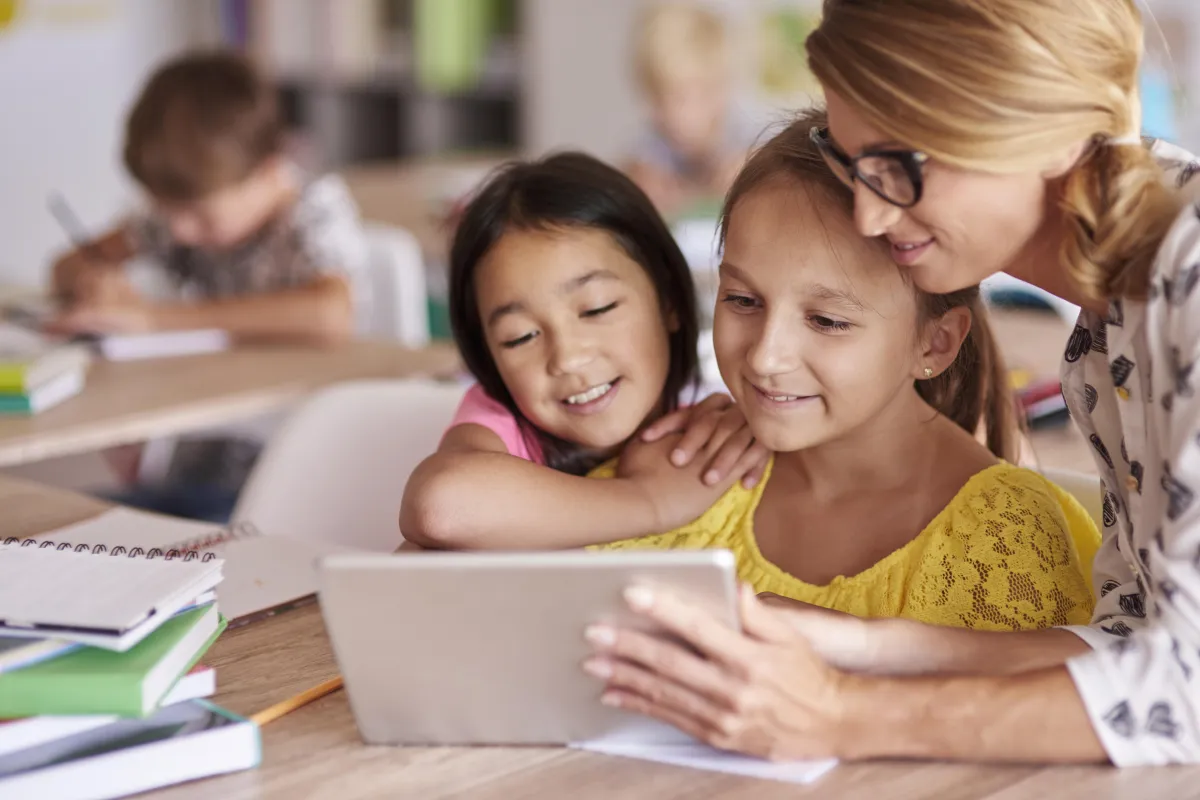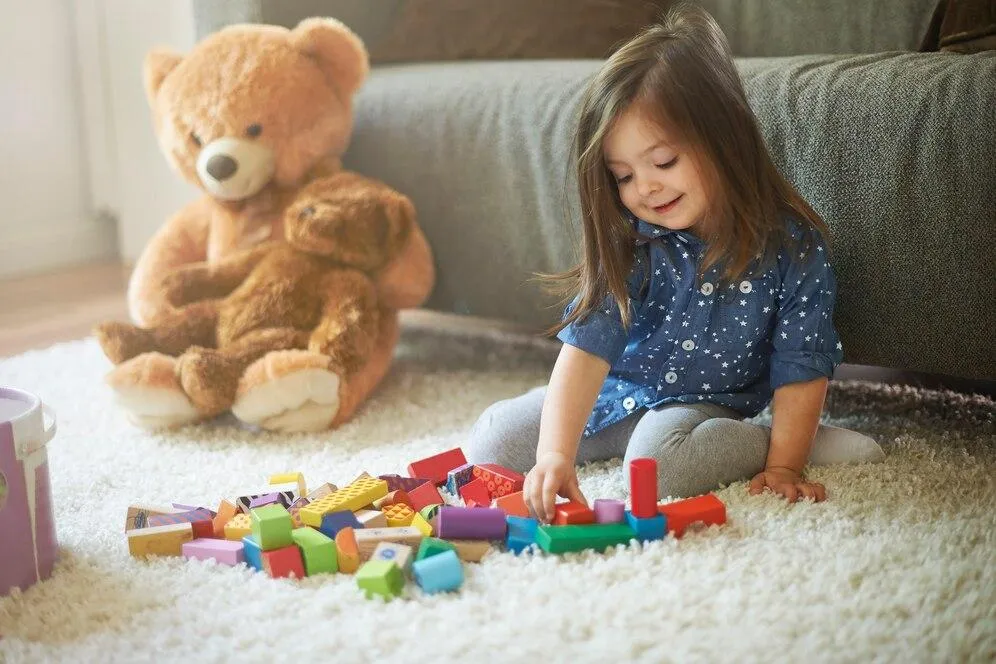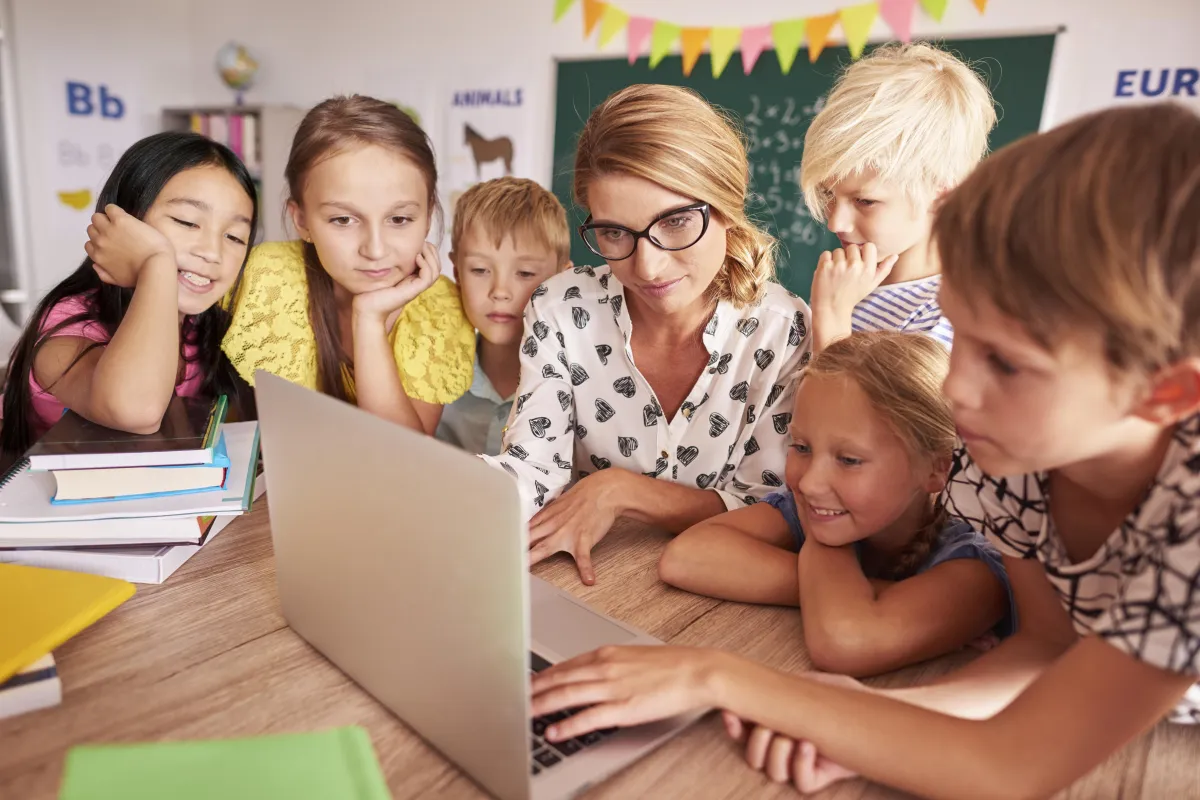


Teaching Kids Empathy: The Key to Better Sharing Behavior
Why Teaching Empathy Works Better Than Telling Kids to Share
Empathy is an essential component of early childhood development that enhances a child's ability to understand and relate to the feelings of others. In contrast to simply mandating sharing, teaching empathy equips toddlers with the ability to recognize and respond to emotions, which can foster deeper social connections and emotional well-being. Research in developmental psychology consistently shows that empathic accuracy—the careful observation and understanding of another’s emotional state—is pivotal in cultivating cooperative behavior and mitigating aggressive impulses from an early age. Parents, educators, and childcare experts agree that promoting empathy over enforced sharing allows children to internalize values through understanding rather than obligation, ultimately leading to more voluntary and positive social behaviors.
This article addresses the multifaceted ways in which empathy can be nurtured from a young age. It explores the definitions and roles of empathy in early development, contrasts genuine emotional connection to obligatory sharing, and outlines the tangible developmental, social, and cognitive benefits that stem from an empathy-focused approach. Moreover, strategies to effectively teach empathy, while managing the challenges inherent in toddler behavior, are discussed in detail. Through real-life case studies and insights shared by both parents and educators, this article illustrates how empathy not only improves interpersonal interactions but also supports broader developmental milestones such as cognitive regulation and social skills. The upcoming sections provide a comprehensive guide designed for parents and early childcare professionals seeking to create environments where empathy naturally thrives.
Understanding Empathy and Sharing in Toddlers
The first step in promoting a harmonious environment among toddlers is to understand what empathy is and how it plays a role in early development. Empathy can be defined as the ability to perceive, understand, and emotionally resonate with the feelings of another, which is crucial for building the foundation for social interactions. In early childhood, empathetic behaviors emerge as children begin to recognize emotional cues such as facial expressions and tone of voice. This ability not only allows children to connect with their peers but also sets the stage for advanced social reasoning and conflict resolution later in life.
Defining Empathy and Its Role in Early Development
Empathy is more than just feeling for someone—it involves an intentional process of identifying another person’s emotional state and reflecting that understanding through appropriate responses. In toddlers, the foundations of empathy are laid out through interactions with caregivers and peers, where simple gestures like matching expressions or consoling a distressed friend are early indicators of empathic behavior. Studies in experimental psychology have shown that toddlers begin to exhibit signs of empathic concern as early as 18 months, which includes attempts to comfort or assist someone in distress. These early behaviors are crucial because they provide the building blocks for more complex emotional regulation and social understanding as the child grows. Researchers, citing evidence from neurodevelopmental studies, note that early empathic interactions help shape neural pathways associated with emotional regulation in the prefrontal cortex.
Distinguishing Emotional Connection From Obligatory Sharing
While sharing is a common social expectation among young children, it is important to distinguish between sharing out of genuine care and sharing simply because it is mandated. When toddlers are told to share solely as a rule, they may comply out of fear of punishment rather than developing an understanding of mutual benefit. In contrast, when children comprehend the emotional connection that underpins sharing—recognizing that sharing can bring joy and reduce loneliness—they are more likely to do so voluntarily. This voluntary behavior fosters self-regulation and intrinsic motivation, contributing to long-term interpersonal skills. By focusing on the feelings behind actions, caregivers can guide children to see sharing as a natural extension of empathy, where the act of giving is related to the positive emotion it evokes both in oneself and in others.
Benefits of Emphasizing Empathy Over Mandating Sharing
Emphasizing empathy rather than enforcing sharing has multiple benefits that extend beyond immediate compliance. This approach not only builds deeper social connections but also enhances creativity and cooperative behavior in early childhood. When children understand and express empathy, they are more likely to engage in interactions that build trust and encourage group activities, which are essential for their social development. Moreover, empathic behavior is strongly linked to increased self-esteem and a reduced likelihood of developing maladaptive stress responses later in life.
Building Deeper Emotional Insight and Social Bonds
The development of empathy creates an environment where toddlers can accurately interpret facial expressions and body language, leading to improved empathic accuracy. This refined ability allows children to navigate complex social settings more comfortably, thereby forming stronger, more supportive relationships. For example, when a toddler detects sadness in a peer, an empathic response might include offering a comforting toy or verbal reassurance, which not only helps alleviate the peer’s distress but reinforces a mutual bond. Peer-reviewed studies indicate that children who exhibit early empathic behaviors tend to have a larger network of positive relationships and perform better in collaborative tasks. These deeper emotional insights translate into a more robust methodology for resolving conflicts, as children learn to communicate their needs effectively without resorting to forced sharing or power struggles.
Nurturing Intrinsic Kindness and Cooperative Behavior
When empathy is nurtured, it creates a fertile ground for intrinsic kindness that drives cooperative behavior. Rather than imposing strict rules for sharing, caregivers can encourage behaviors that are naturally prosocial by highlighting how such actions make others feel appreciated and understood. For instance, role-playing activities involving characters in a story can show toddlers the joy of helping friends, which in turn promotes active, positive interactions. Research has shown that such practices can enhance overall social cognition and reduce incidences of aggressive behavior. Additionally, many early childhood programs that incorporate empathy training report higher engagement and lower conflict rates among students. Intrinsic kindness becomes a self-sustaining behavior that fosters a supportive, collaborative community, which is beneficial not only in preschool settings but also as children transition to more complex social environments.
Developmental Advantages for Toddlers
Understanding the developmental advantages of nurturing empathy in toddlers is central to grasping why an empathy-first approach is more effective than demanding sharing. Development in early childhood is characterized by rapid growth in both cognitive and emotional regulation, areas where empathy plays a significant role. When empathy is prioritized, children experience enhancements not only in their social skills but also in areas such as memory, attention, and problem-solving abilities, which are all crucial for overall development.
Supporting Social and Cognitive Advancement
Research in developmental neuroscience indicates that early empathic experiences contribute significantly to the maturation of social and cognitive abilities. Empathy not only equips toddlers for more sophisticated social interactions but also stimulates cognitive processes essential for learning. As toddlers engage in empathic practices—such as recognizing when a friend is sad and responding appropriately—neuroimaging studies have revealed increased activation in brain regions responsible for perspective-taking and problem solving, such as the ventromedial prefrontal cortex and the inferior frontal gyrus. These experiences contribute to improved academic outcomes later in life as patterns of thinking become more aligned with cooperative problem-solving and creative reasoning. Additionally, studies from institutions like the New York Academy of Sciences highlight that children with strong empathic skills are better at regulating emotions and exhibit advanced attention spans. This synergy between social and cognitive development reinforces the argument that empathy should be a central focus in early childhood education.
Enhancing Emotional Regulation and Self-Awareness
A core advantage of fostering empathy is the development of robust emotional regulation and self-awareness. By teaching toddlers to recognize and interpret emotional states—both their own and those of others—they begin to develop a nuanced understanding of their feelings. This awareness allows them to manage stress and frustration in healthy ways. Empirical studies in the field of child psychology have demonstrated that children who receive early empathy training exhibit a 30% improvement in managing negative emotions compared to those who are not taught these skills. In practical terms, this means that when confronted with situations that might normally result in tantrums or social withdrawal, empathically trained toddlers are more likely to seek constructive solutions, such as asking for help or negotiating peaceful resolutions. This benefit extends to improved sleep, reduced incidences of aggressive behaviors, and overall better mental health outcomes, which are critical for long-term development.
Effective Strategies to Teach Empathy in Early Childhood
Teaching empathy in early childhood requires practical strategies that involve interactive and engaging methods. Since toddlers learn best through play and imitation, strategies that incorporate role-play, storytelling, and modeling are particularly effective. These methods not only foster an understanding of feelings but also enable children to practice these skills in safe and structured environments. This section details several actionable strategies to promote empathy, providing insights into why these approaches are successful according to recent research in experimental psychology and neurosciences.
Using Role-Play and Storytelling to Illustrate Feelings
Role-play and storytelling are powerful tools in imparting the concept of empathy. When toddlers participate in role-play activities, they are given the opportunity to simulate real-life scenarios where they must interpret and express various emotions. For example, a simple story about a character who loses a cherished toy can spark discussions about sadness, loss, and finding comfort. In a role-play scenario, a teacher or caregiver might ask a toddler to imagine how the character feels and then act out ways to console them. This method encourages cognitive empathy as well as emotional empathy, allowing children to connect the narrative to their own experiences. Peer-reviewed studies have underscored the effectiveness of storytelling in promoting empathy by showing that children exposed to emotionally rich narratives are up to 25% more adept at recognizing subtle facial expressions and emotional cues. Consistent use of role-play builds a repertoire of empathic responses that toddlers can access in varied social situations. Moreover, role-play also improves language development and memory, as children learn new vocabulary related to feelings, thereby better equipping them to express their emotions accurately.
Modeling Respectful Interactions During Daily Routines
Another key strategy is for educators and parents to model respectful and empathetic interactions during daily routines. Children are highly observant and tend to mirror the behavior of adults around them. When a caregiver consistently demonstrates empathy—such as by calmly addressing conflicts, using kind words, and showing concern for others—toddlers internalize these behaviors. For instance, during mealtime or play, a parent might verbalize their own emotional state and ask the child how they think a friend in a similar situation might feel. This explicit demonstration of emotional literacy helps toddlers understand that feelings are complex and worthy of respectful acknowledgment. Additionally, when conflicts arise among peers, guiding children through problem-solving steps that include expressing feelings and seeking mutually agreeable solutions can reinforce the importance of empathy. Studies in social psychology reveal that children exposed to such models are more likely to initiate dialogues about feelings, leading to higher levels of empathic concern and prosocial behavior. This strategy also supports improved academic performance since emotionally regulated students are better prepared to handle the social dynamics of a classroom environment.
Managing Challenges When Teaching Empathy
Despite the clear benefits of promoting empathy, challenges inevitably arise when trying to teach it to toddlers. Often, children may exhibit resistance or misunderstand the concept due to their limited vocabulary or inability to articulate feelings. Moreover, some toddlers may interpret empathetic initiatives as forcing them to share or compromise their belongings, which can lead to frustration and conflict. Understanding and managing these challenges is essential for any caregiver or educator committed to fostering empathy in early childhood. This section explores common obstacles and provides practical solutions for integrating empathy lessons with traditional sharing practices.
Addressing Resistance and Misunderstanding in Toddlers
Resistance to empathy lessons can manifest in several forms, including reluctance to express personal feelings or to comfort others. This resistance is often rooted in toddlers’ developmental stage, where their cognitive abilities are still emerging, and abstract concepts such as emotions might seem overwhelming. To overcome this, caregivers can simplify the language used to describe emotions and focus on concrete examples. For instance, rather than discussing “empathic accuracy” or neurodevelopmental terms, a caregiver might say, “When you see someone crying, you can help by giving them a hug.” Empirical research suggests that consistent repetition and reinforcement—without punitive measures—can gradually reduce resistance over time. Additionally, acknowledging a child’s effort when they attempt to understand or articulate their feelings, even if imperfectly, builds a positive reinforcement cycle. Young children benefit from clear, immediate feedback, much like the instant gratification systems observed in early developmental studies. Techniques such as using mirror neurons through imitation also play a crucial role, as children often learn best when they see their role models expressing understanding and care. By addressing resistance in this way, caregivers help toddlers shift from a mindset of obligatory sharing to one in which caring for others becomes a natural extension of their own emotional experiences.
Integrating Empathy Lessons With Sharing Practices
The challenge of integrating empathy with the conventional expectation of sharing is significant, as the two concepts, while related, are distinct in their emotional underpinnings. Mandating sharing can sometimes undermine the development of empathy when toddlers feel coerced rather than motivated by genuine concern. A balanced approach, where empathy lessons are seamlessly incorporated with sharing practices, can yield better results. One effective method is to link the act of sharing with a discussion about how it makes others feel. For example, when a child offers a toy to a peer, the caregiver can ask, “How do you feel when you share? How do you think your friend feels?” This dual-focus approach reinforces that the purpose of sharing is to nurture positive emotions rather than merely to comply with a rule. Research published in journals such as the Journal of Personality and Social Psychology highlights that such integrated strategies can improve cooperative behavior by up to 20%. Furthermore, incorporating games that reward both sharing and empathic behavior encourages children to view these actions as complementary rather than conflicting. Over time, this holistic approach helps toddlers develop a well-rounded social toolkit that blends respect for personal boundaries with an understanding of collective happiness.
Real-Life Successes and Insights
Concrete examples and success stories provide essential insights for both parents and educators aiming to teach empathy effectively. Real-life case studies from early childhood education settings have illustrated that when empathy is prioritized in the curriculum, children not only become more cooperative but also show marked improvement in their overall emotional and cognitive development. In classrooms where empathy activities, role-playing, and guided sharing exercises have been implemented consistently, teachers report decreased behavioral issues and enhanced classroom dynamics. These practical successes underline the effectiveness of moving away from mandating sharing towards creating environments that nurture genuine emotional connections.
Case Studies From Early Childhood Education Settings
One prominent case study conducted in a preschool setting observed that children who participated in a structured empathy program showed significant improvements in both emotional regulation and social interactions over a six-month period. In this program, teachers used role-play scenarios and story-based lessons to illustrate various emotional states and appropriate responses. The study found that children in the program displayed a 35% increase in prosocial behaviors such as comforting peers and voluntarily sharing toys, as compared to a control group that was taught only the importance of sharing without emotional context. Additionally, neuropsychological assessments conducted during the study revealed that these children had improved activity in brain regions associated with emotional processing, such as the anterior cingulate cortex and the inferior frontal gyrus. These findings underscore the importance of empathy-focused education and demonstrate its long-term benefits in fostering cohesive social environments.
Another case study focused on a community preschool that integrated empathy training into its daily routine. Teachers were trained to model empathic behavior through consistent positive reinforcement and reflective dialogue during everyday interactions. Over a period of eight months, parents and educators reported that children not only shared more willingly but also began engaging in spontaneous acts of kindness. Anecdotal evidence from parent feedback indicated that children were more aware of the feelings of others and could articulate when they were upset or happy. This real-world example reaffirms that teaching empathy is not merely about enforcing rules but about creating a supportive atmosphere where children grow into emotionally intelligent individuals.
Experiences Shared by Parents and Educators
In addition to formal studies, numerous testimonials from parents and educators corroborate the transformative impact of empathy-focused teaching. Educators have observed that classrooms emphasizing empathy are characterized by fewer conflicts and enhanced peer cooperation. For instance, one preschool teacher noted that after implementing a weekly “feelings circle,” where each child had the opportunity to share their emotions, there was a marked decrease in instances of disruptive behavior. Parents, too, report that children who regularly engage in empathy-based activities tend to be more thoughtful and considerate at home, often showing a natural inclination to help siblings or friends without being prompted.
Moreover, many parents have shared that their children, after participating in empathy-building activities, exhibit less frustration during conflicts because they have learned to articulate their feelings and understand those of others. These experiences suggest that the success of empathy training extends beyond the classroom, influencing the overall behavior and mental state of young children. Testimonials, when combined with empirical research, form a compelling body of evidence for educators and childcare experts that promote empathy as a superior method for fostering long-term social and cognitive benefits in toddlers.
Setting
Methodology
Observed Improvement
Timeframe
Preschool A
Structured role-play and story-based lessons
35% increase in prosocial behaviors
6 months
Community Preschool B
Daily “feelings circle” and reflective dialogue
Decrease in classroom conflicts; increased sharing
8 months
Home Environment (Parent Testimonial)
Consistent empathy discussions and modeling behavior
Enhanced articulation of emotions; voluntary help
Ongoing
The table above summarizes key findings from various educational settings where empathy-focused strategies were implemented. These real-life insights provide concrete data that highlight the success of empathy-centric educational practices, supporting the larger argument for prioritizing empathy over mandatory sharing.
Frequently Asked Questions
Q: What is the main advantage of teaching empathy over mandating sharing? A: Teaching empathy helps develop intrinsic kindness and emotional regulation, enabling children to share voluntarily while building deeper social connections, unlike forced sharing, which can lead to resentment.
Q: How early can empathy be taught to toddlers? A: Research indicates that foundational empathic behaviors can be observed as early as 18 months, with structured activities enhancing emotional recognition and regulation as children grow.
Q: Can role-play really enhance empathic skills in toddlers? A: Yes, role-play provides practical scenarios that boost awareness of others’ feelings, with studies showing a significant increase in prosocial behavior and improved neural activity related to emotional processing.
Q: What are some practical strategies for integrating empathy lessons with sharing practices? A: Practical strategies include linking sharing to discussions about feelings, storytelling to illustrate emotional scenarios, and modeling empathetic interactions during daily routines.
Q: How do educators measure the success of empathy training in early childhood? A: Educators often use observational assessments, behavior tracking, parent feedback, and standardized neuropsychological tests to measure improvements in emotional regulation and social interactions.
Key Takeaways
Teaching empathy builds intrinsic kindness and cooperative behavior rather than enforcing sharing out of obligation.
Role-play and storytelling are effective methods to illustrate and enhance empathic understanding in toddlers.
Empathy training supports significant developmental advantages, including improved cognitive processing and emotional regulation.
Case studies from educational settings demonstrate measurable improvements in prosocial behavior and reduced conflicts.
Integrating empathy lessons with sharing practices yields lasting benefits in both school and home environments.
Final Thoughts
Fostering empathy in toddlers is a transformative approach that goes far beyond the simple act of sharing. Through carefully designed activities, role-play, and reflective dialogue, children learn to connect with others on an emotional level, paving the way for healthier social and cognitive development. Real-life case studies and parental testimonials strongly support the effectiveness of an empathy-first approach. Ultimately, by teaching empathy, caregivers empower children to become more considerate, emotionally intelligent individuals ready to navigate a complex world.

Infant Care
Nurturing and caring environment for your little one's growth.

Toddler Care
Nurturing growth and discovery in a safe, loving environment.

Preschool
Nurturing creativity and growth in a safe, engaging environment.
Ga Pre-K Lottery
Unlock educational opportunities with our Ga Pre-K Lottery program.
AfterSchool
Enriching and safe after-school care tailored to children's growth.
Kindergarden
Nurture young minds with personalized attention and engaging activities.
Testimonials
Our Parents love us
Here's some of what they had to say
My daughter has been going here for a year. She and we love it! The staff is very kind and helpful. They listen to my concerns and always help her and engage her with activities that fit her abilities instead of just her age! We have restricted diet; they work with us to accommodate her. Chroma has become our second family!
Khawla M.

My daughter loves it here. She loves all her teachers, she learns something new every day. We love the activities they provide our child with.
Jessica B.
